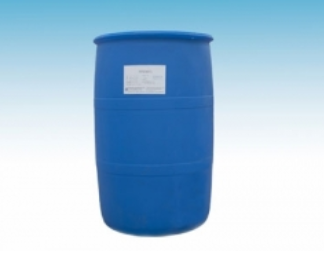Surfactant can reduce the interfacial tension and make the wetting angle θ Near zero, the solid powder can be dispersed spontaneously in surfactant solution. Meanwhile, surfactant can help liquid wet the inner surface of solid, make liquid penetrate into the channel and void between the particles' internal aggregates, provide certain pressure, and under the action of mechanical force, the reinforcement bond force of particle aggregation will be destroyed. At the same time, surfactant can help grind, reduce the surface energy of particles, prevent the surface of damaged surface from bonding, and thus achieve the purpose of preventing particle aggregation.

Surfactant as grinding aid also plays a lubricating role, which can improve the specific surface area of the product, shorten the grinding time and improve the grinding efficiency. The mechanism of action can be summarized as: reducing crushing energy, increasing brittle fracture probability, preventing plastic deformation, controlling flocculation and aggregation of fine particles, strengthening dispersion and adjusting rheological properties of slurry.
The traditional types are sodium alkylbenzene sulfonate, sodium alkylnaphthalene sulfonate and sodium alkylsulfate. Among these anionic surfactants, hydrophobic groups with branched chain structure and long carbon chain have poor biodegradability, which can easily cause water pollution in rivers. In addition, sulfonate and sulfate, the hydrophilic groups, need the participation of sulfur bacteria, so the degradation time is long. In contrast, phosphoesters are relatively easy, and carboxylates are easy to degrade. Among them, twelve Sodium Alkylbenzene Sulfonate (LAS), which is used as a detergent, has large stimulation, large teratogenicity, strong alkaline resistance and relatively poor biodegradability. It is gradually reduced to fatty alcohol polyoxyethylene ether sulfate (AES), secondary alkyl sulfonate (SAS), and so on. α- Sodium olefin sulfonate (AOS) α- Sodium sulfonylfatty acid methyl ester (MES), fatty alcohol polyoxyethylene ether carboxylate (AEC), and new products, tea saponin and polypeptide surfactant, were replaced.
It is a kind of surfactant widely used, which can be combined with other types of surfactants and play a synergistic and synergistic role, and has the functions of defoaming, emulsifying, cleaning and dispersing. Among them, the main defoaming agents are fatty amide and polyoxyethylene dialkyl ether; There are three series of emulsifiers: alkylphenol polyoxyethylene ether (OP Series), fatty acid sorbitol ester (s Series), polyoxyethylene fatty acid water loss sorbitol ester (T Series). The leveler such as adding O and O-15 in a flat way.
Although TX-10 can be treated by biochemical method, the decomposition products are still phenols, which are fish toxic and can destroy the reproductive system of human body. Some European countries have been banned by law and can be replaced by natural fatty alcohol polyoxyethylene ether or sorbide with low toxicity. In addition, glycosyl surfactants, ALKYLGLUCOSIDES (APG), sucrose esters (SE) and alkanolamide are attracting more and more attention because of their excellent application performance, low toxicity and excellent biodegradability.